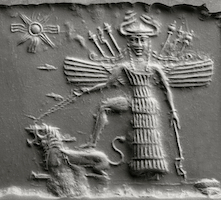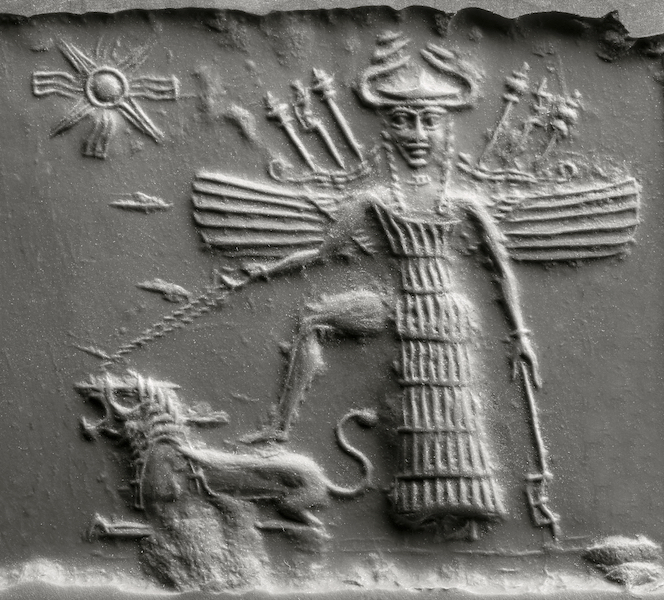
NEW YORK – The Morgan Library & Museum presents She Who Wrote: Enheduanna and Women of Mesopotamia, ca. 3400-2000 B.C., through February 19, 2023. The exhibition brings together for the first time a comprehensive selection of artworks that capture the rich and shifting expressions of women’s lives in ancient Mesopotamia during the late fourth and third millennia B.C. It centers on the high priestess and poet Enheduanna (circa 2300 B.C.), the world’s first author known by name, who wielded considerable religious and political power.
Displaying a spectacular collection of her texts alongside other works made circa 3400–2000 B.C., She Who Wrote celebrates Enheduanna’s poetry and her legacy as an author, priestess and woman while bearing testament to women’s diverse roles in religious, social, economic and political contexts — as goddesses, priestesses, worshippers, mothers, workers and rulers.
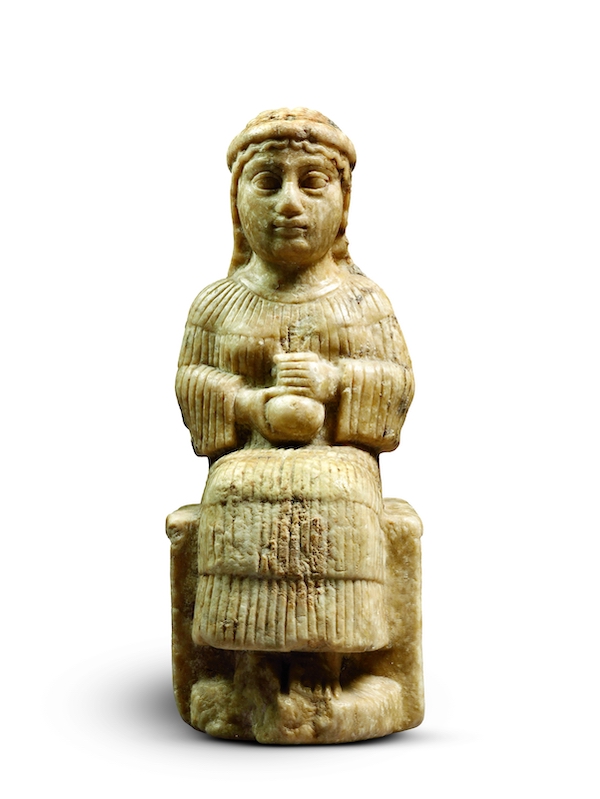
Enheduanna received her name, which means in Sumerian “high priestess, ornament of heaven,” upon her appointment to the temple of the moon god in Ur, a city in southern Mesopotamia, in present-day Iraq. The daughter of the Akkadian king Sargon (ca. 2334–2279 B.C.), Enheduanna left an indelible mark on the world of literature by composing extraordinary works in Sumerian. Her poetry reflected her devotion to the goddess of sexual love and warfare — Inanna in Sumerian, Ishtar in Akkadian. Whereas much of ancient Mesopotamian literature is unattributed, Enheduanna introduced herself by name and included autobiographical details in several poems. Her passionate voice had a lasting impact in Mesopotamia, as her writings continued to be copied in scribal schools for centuries after she died.

In addition to texts by Enheduanna, She Who Wrote: Enheduanna and Women of Mesopotamia, ca. 3400- 2000 B.C. includes works referencing her name and image, as well as representations of women from the earliest Mesopotamian cities. These examples represent painstaking artistry and stylistic variety, often combining a delicate naturalism with expressive stylization. These works of art have withstood millennia, lending us insight into an often-overlooked aspect of an ancient patriarchal society: womanhood.
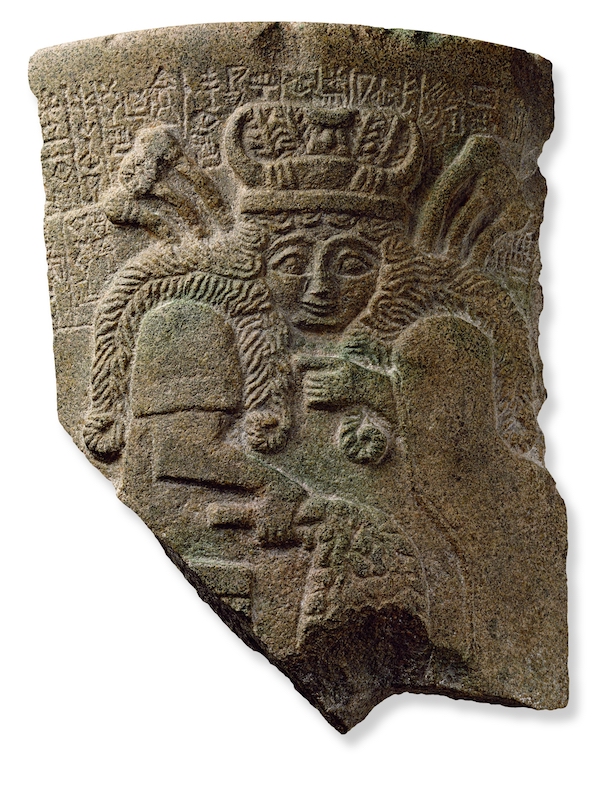
Highlights in the exhibition include Fragment of a vessel with frontal image of goddess from the Early Dynastic IIIb period (ca. 2400 B.C.). This vessel fragment shows one of the first images of an anthropomorphic goddess created in Mesopotamia. The divine nature of the figure is expressed by the horned crown with feathers (or fronds) and an animal head, as well as by the vegetal elements above her shoulders. The goddess stares directly at the viewer, exuding power and authority. Her voluminous hair and the cluster of dates in her right hand depict her as a deity of fertility and abundance.
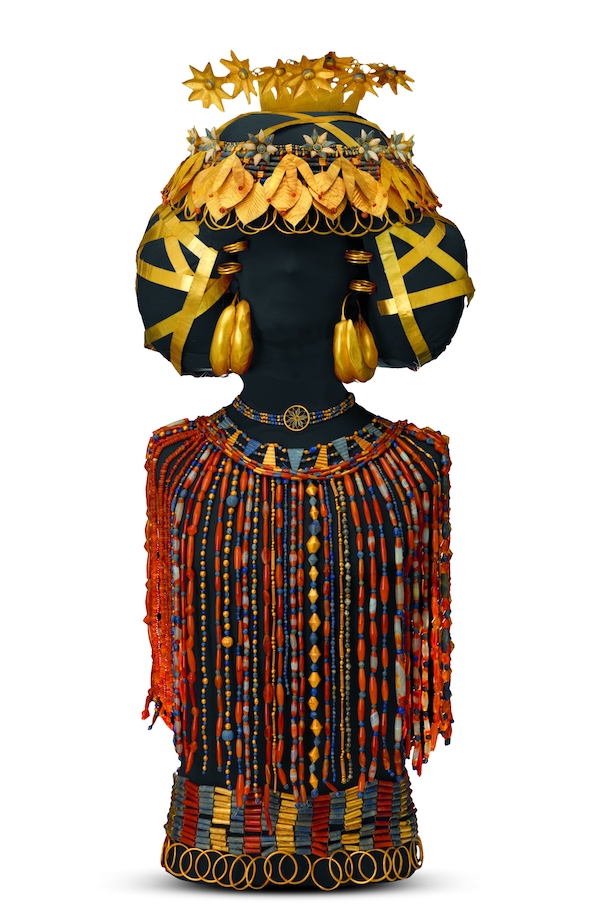
Also included is Queen Puabi’s funerary ensemble, found during the excavation of her tomb in 1927. The ensemble is a feast for the eyes, with its vibrant colors, precious materials and skilled artisanship. Several wreaths formed of floral and vegetal motifs rested on Puabi’s forehead, with ribbons of thinly hammered gold circling her voluminous hair and gold coils framing her face. At the crown of her head sits a large gold comb, featuring seven delicately curving flowers; large lunate earrings dangled from her ears. A choker with a central rosette sits against her neck, and a profusion of carnelian, lapis lazuli and gold beads covers her chest, strung in rhythmic patterns. Finally, a belt of beads with a fringe of disks rests against Puabi’s hips.
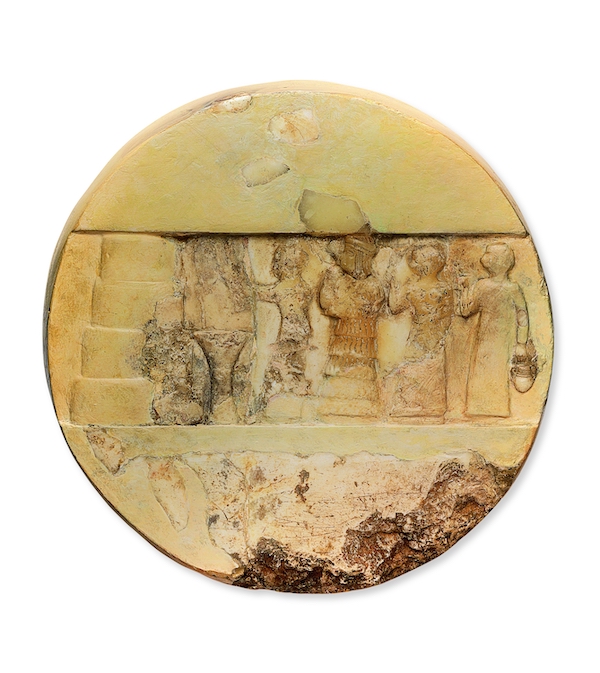
The exhibition also includes the Disk of Enheduanna from the Akkadian period, ca. 2300 B.C. The partially preserved inscription on one side of this disk was recovered from a copy on an Old Babylonian (ca. 1894–1595 B.C.) tablet, recorded hundreds of years after the disk’s dedication by Enheduanna. The scene carved on the opposite side shows an open-air sacred precinct with a multi-story edifice at left. Enheduanna occupies the center, depicted slightly larger than her attendants to reflect her status. Two priests behind her carry ritual paraphernalia; the one in front of her pours a libation on an altar. Enheduanna wears a tiered, flounced garment and a headdress in the form of a circlet, both of which became canonical for her successors.
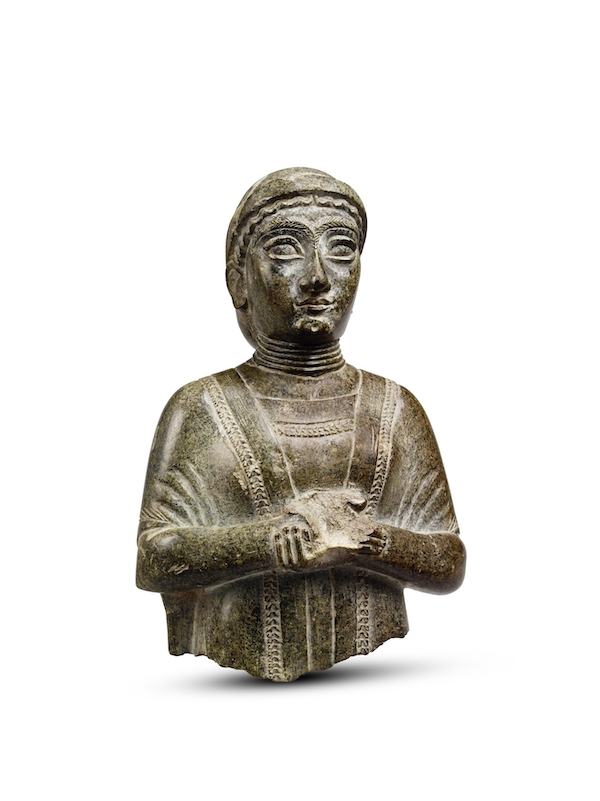
The Morgan’s Director, Colin B. Bailey, said, “After unavoidable delays due to the pandemic, we are delighted to be cooperating with colleagues from museums around the world, who have remained steadfast in their commitment to assist the Morgan in presenting this groundbreaking exhibition. Enheduanna’s legacy is multifaceted, and the Morgan is honored to present her story to a new generation of visitors.”
Visit the website of the Morgan Library & Museum and see its dedicated page for She Who Wrote: Enheduanna and Women of Mesopotamia, ca. 3400-2000 B.C.


